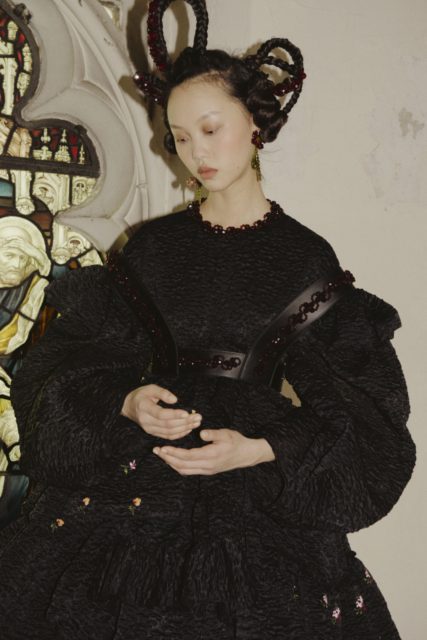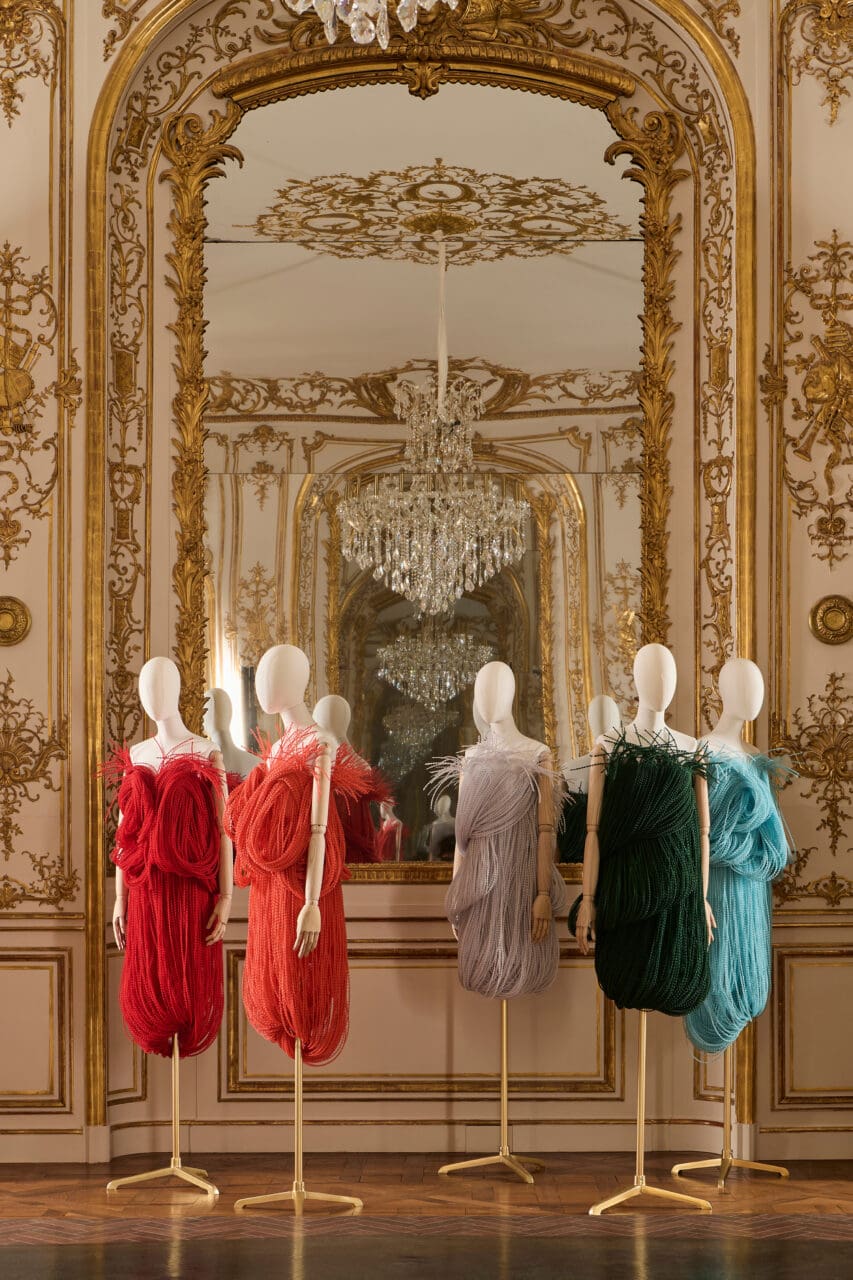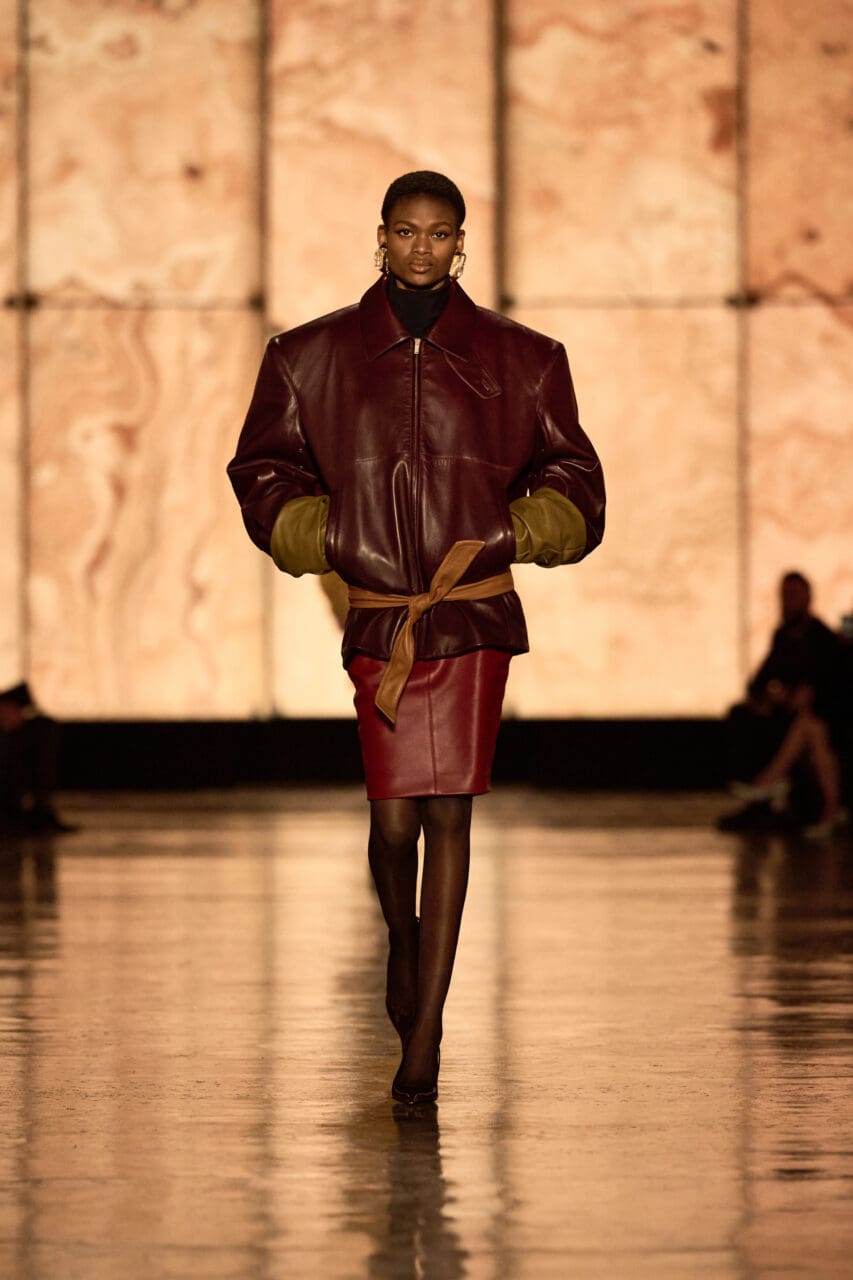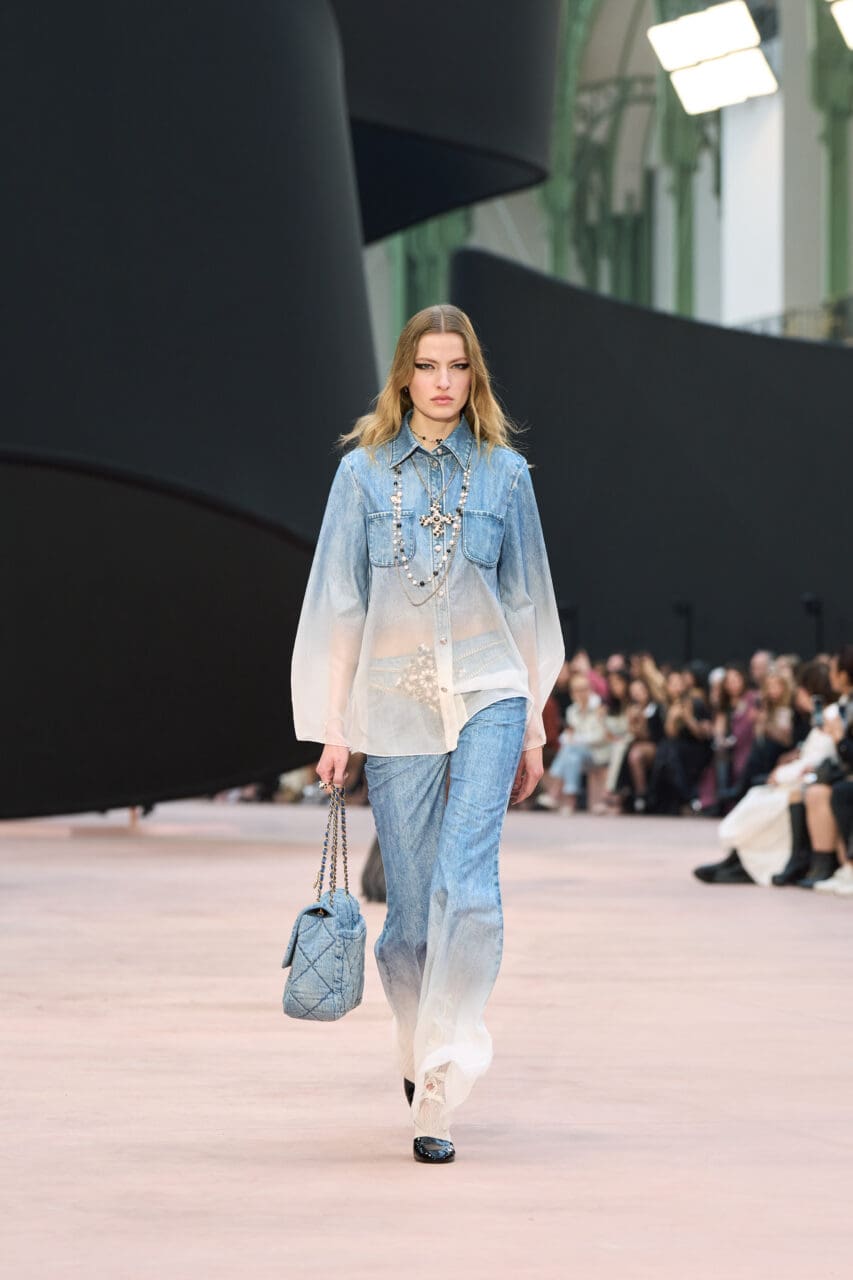For his ready-to-wear debut at Fendi, Kim Jones paid homage to the women who have shaped the house past and present, proposing a modern wardrobe rooted in Roman glamour. British Vogue’s fashion critic Anders Christian Madsen brings you five things to know about the collection.
It was Kim Jones’s first ready-to-wear collection for Fendi
For his first turn on Fendi’s ready-to-wear runway, the F-shaped glass boxes that framed Kim Jones’s haute couture debut for the house last month had been filled with Roman ruins. “The couture show was about moving my mindset from England to Rome,” he said on a video call from Milan before the digital show. Now, he had arrived, ready to navigate that Roman landscape where the constant evidence of time has a way of pushing you into the present. “I wanted a wardrobe for women for modern times, with the DNA of what Fendi is to me.” That, he said, was the total sum of the many women that make up – and have historically made up – the Fendi family and its ateliers. They played muses to his collection, imbuing it with their effortless embodiment of modernist Roman glamour, and the no-nonsense charm that comes with living in a city that’s seen it all.
Jones debuted his Fendi silhouette
Jones presented his proposal for a new Fendi in powdery and earthy tonal looks, which he called “palate cleansing”, and which helped to clarify his silhouette through a screen. Lines either followed the contour of the body, or obscured it. In dresses – often knitted – the former case was made in a straightforward and easy silhouette, which Jones occasionally tempered with a soft magnified shoulder or a dropped armhole. His flou had a handkerchief sensibility to it, sometimes underlined by actual handkerchief hems, but most vigorously expressed in shirts and blouses oversized to the point of shrouding. Jones picked up those clues from his couture debut where some silhouettes entirely masked the anatomy, while others adapted a body-conscious Vionnet shape. That dress was repeated in this collection, in shorter versions with silk-satin wrap detailing that echoed that of Jones’s men’s suiting at Dior.
Silvia Venturini Fendi was a muse
It was inevitable that Jones’s work for Fendi would bear evidence of a life lived in menswear. In a transition that made it come full circle, he turned his spotlight to the wardrobe of Silvia Venturini Fendi, who remains creative director of accessories at her LVMH-owned family company. It was meta because Venturini doesn’t just design Fendi’s men’s collections but is known for her particularly handsome personal wardrobe, which incorporates elements of menswear, and has now ended up inspiring Jones’s womenswear for the house that carries her surname. Her signature look was evident in formidably-structured tailoring and jackets with an air of workwear about them, such as the caban in look 8, which Jones to referred to as “the Silvia jacket”. “When I met her, she was wearing a very chic safari sort of dress. It was immaculate. It has that almost regal feel to the quality,” he reminisced, noting how Venturini has been his biggest source for Fendi facts. “She knows everything by heart.”
Jones’s Fendi cut a contrast to that of Karl Lagerfeld
Where the Fendi of Jones’s predecessor Karl Lagerfeld was always quite ‘dressed’ – although religiously light in materiality – Jones’s Fendi emerged as a more low-key, perhaps practical wardrobe. “Daywear, tailoring, dresses… things that have a certain ease to them, but which you can dress up if you want to,” as he put it. “It’s what I look at with the family: the way they can look so chic at work, and half an hour later they come to dinner a touch different, having changed the look.” Along with Venturini Fendi, Jones had mined Lagerfeld’s Fendi archives for references to adapt. “I think she likes the idea of someone interpreting it, because she worked with Karl her entire life,” he said. “It’s good to look at things from the outside. You see things you wouldn’t see when you’re immersed in it.”
The show introduced new accessories
With his natural eye for marketing, Lagerfeld famously drew the Fendi double-F logo, declaring it stood for “Fun Furs”. “He trademarked it straight away, and got them to buy him one of the most expensive houses in Rome as payment for it,” Jones smiled. “Or so goes the story.” He riffed on the house’s monogram in architectural heels that evoked the sharp geometry of Fs, and introduced a large soft bag with massive double Fs forged in hardware – a detail echoed in jewellery designed by Delfina Delettrez, Venturini Fendi’s daughter. “When Karl played with the Fendi codes, it was always in very clever ways. Not that I’d ever compare myself to him,” Jones said, “but I’m trying to think of things that can echo that going into the future.”






